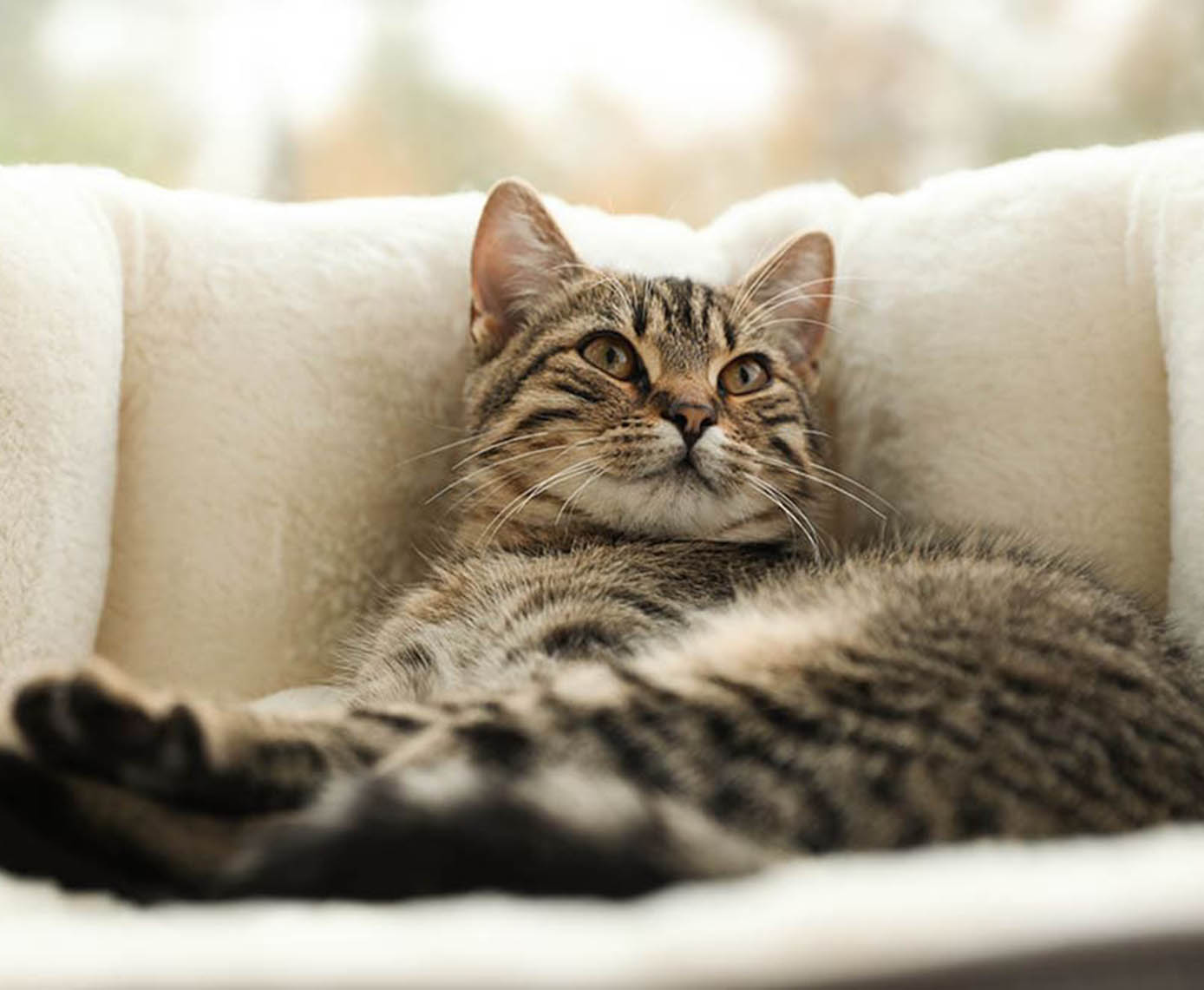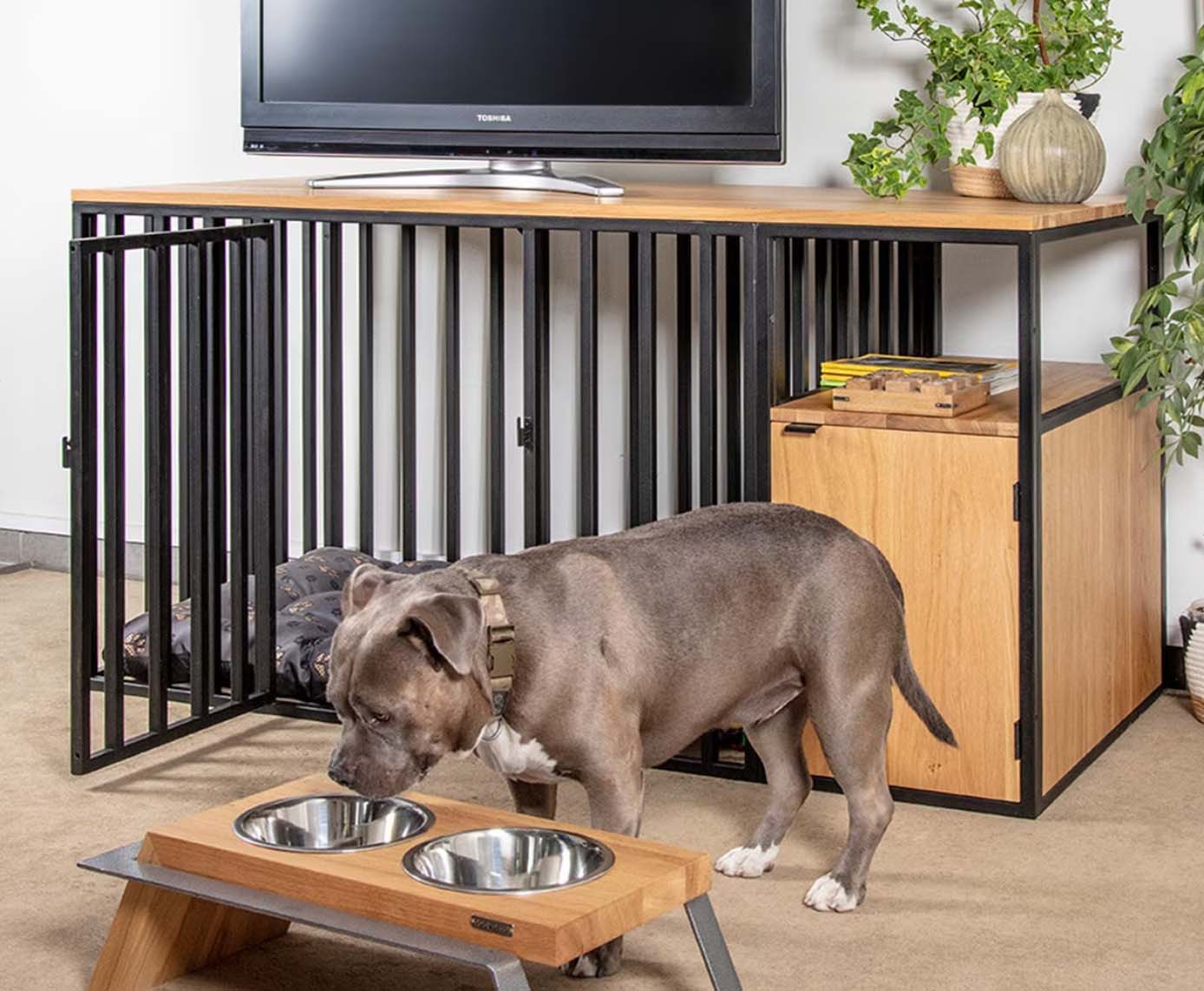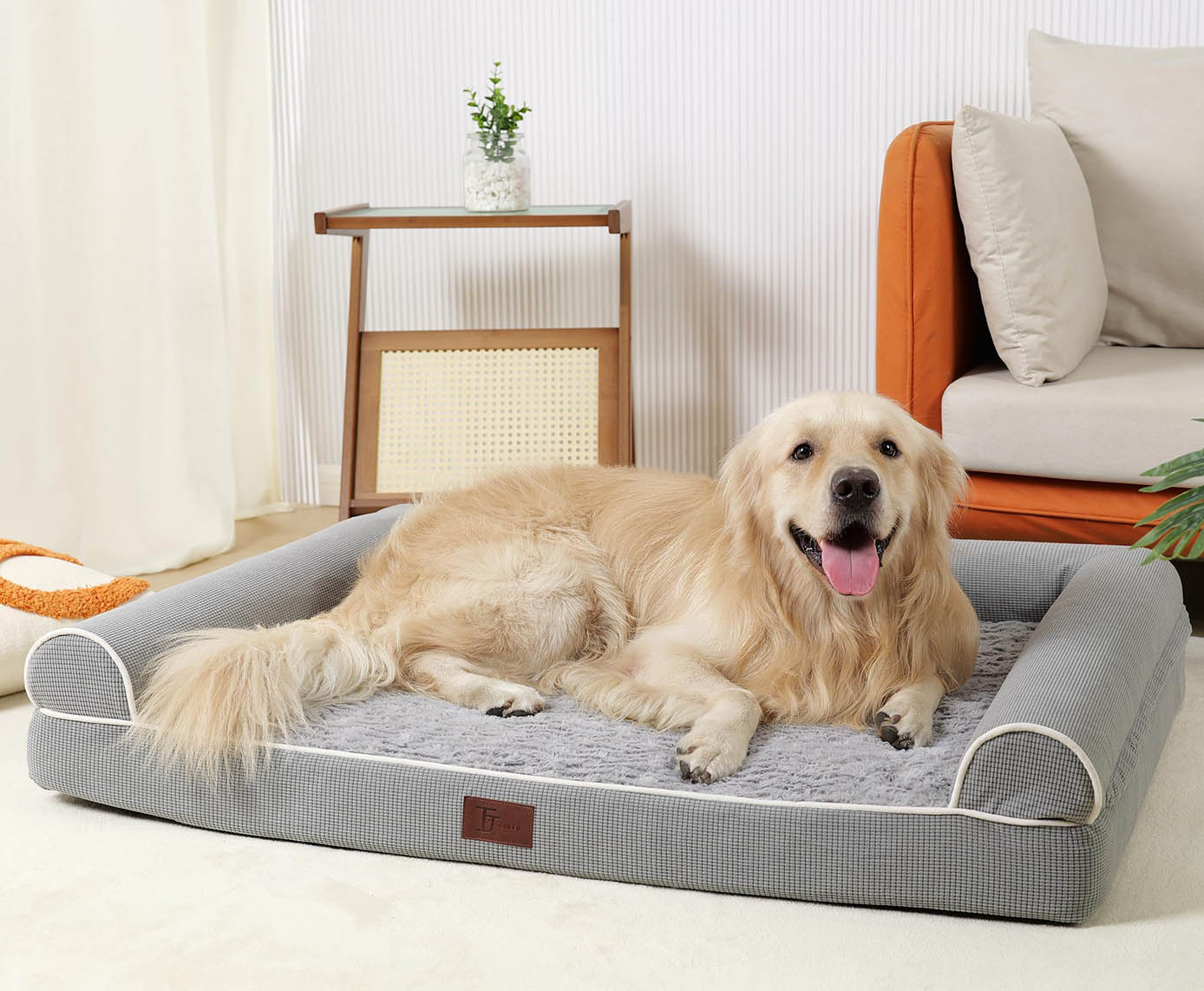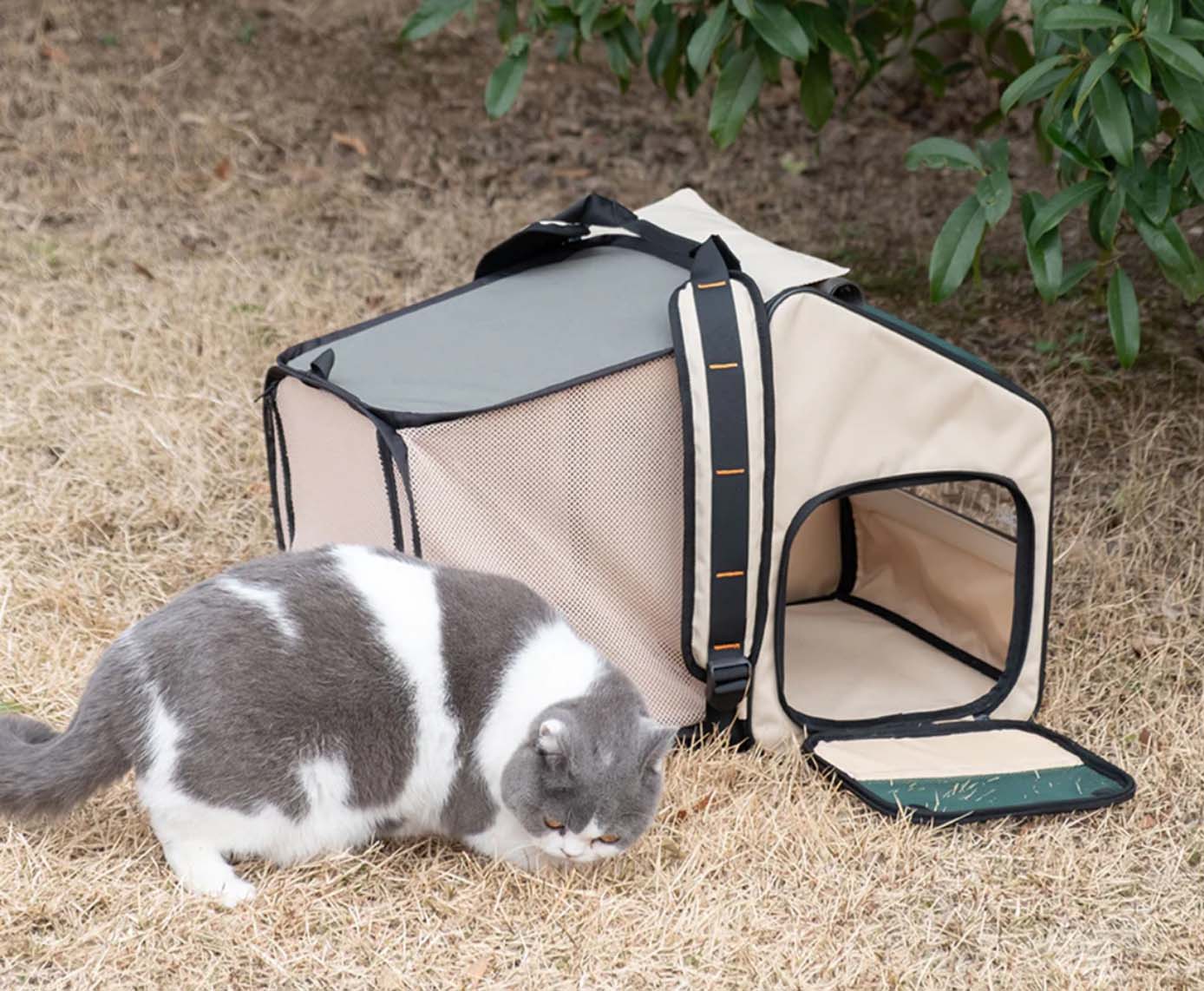When it comes to ensuring the comfort and well-being of your feline friend, choosing the right cat bed is crucial. The material of the bed plays a significant role in providing comfort, warmth, and durability. With so many options available, from memory foam to fleece, it can be challenging to decide which material is best suited for your cat.
Cats spend a significant portion of their day sleeping—anywhere from 12 to 16 hours on average. This makes their bed a critical aspect of their daily life. The material of the bed affects not only the comfort but also the support it provides, its durability, ease of cleaning, and even how well it retains heat. Therefore, understanding the various materials used in cat beds can help you make an informed decision that caters to your cat’s specific needs and preferences.
Memory Foam: The Ultimate in Comfort and Support
Memory foam is a popular material in both human and pet bedding due to its ability to conform to the shape of the body, providing personalized support. For cats, this means a bed that cradles their body, reducing pressure points and offering maximum comfort.
Benefits:
- Orthopedic Support: Memory foam is especially beneficial for older cats or those with joint issues, as it provides superior support, helping to alleviate pain and discomfort.
- Comfort: The material adapts to the cat’s body, ensuring a snug and comfortable sleeping environment.
- Durability: High-quality memory foam is long-lasting and resistant to wear and tear, making it a good investment.
Considerations:
- Heat Retention: Memory foam tends to retain heat, which can be a plus during colder months but may be uncomfortable in warmer climates.
- Price: Memory foam beds are generally more expensive than those made from other materials.
- Weight: These beds can be heavier and less portable, which might be an issue if you move the bed frequently.
Best For: Older cats, cats with arthritis or joint problems, and those who prefer a firmer bed.
Fleece: Softness and Warmth for Cozy Naps
Fleece is a synthetic fabric that is incredibly soft and warm, making it a popular choice for cat beds. It mimics the cozy feeling of fur, which many cats find irresistible.
Benefits:
- Warmth: Fleece is an excellent insulator, keeping your cat warm and cozy, especially during colder months.
- Softness: The plush texture of fleece makes it a comfortable choice for cats who love to snuggle.
- Lightweight: Fleece beds are usually lightweight and easy to move, making them ideal for cats who like to change their sleeping spots.
Considerations:
- Durability: While fleece is soft, it may not be as durable as other materials, especially if your cat is prone to scratching.
- Maintenance: Fleece tends to attract pet hair, which can be challenging to clean. Regular washing is necessary to keep it fresh.
- Heat Retention: Like memory foam, fleece retains heat, which may not be suitable for all climates.
Best For: Cats who love warmth and softness, and those who live in cooler climates.
Cotton: Natural and Breathable Comfort
Cotton is a natural fiber known for its breathability and comfort. It’s a versatile material used in many cat beds, often blended with other fabrics.
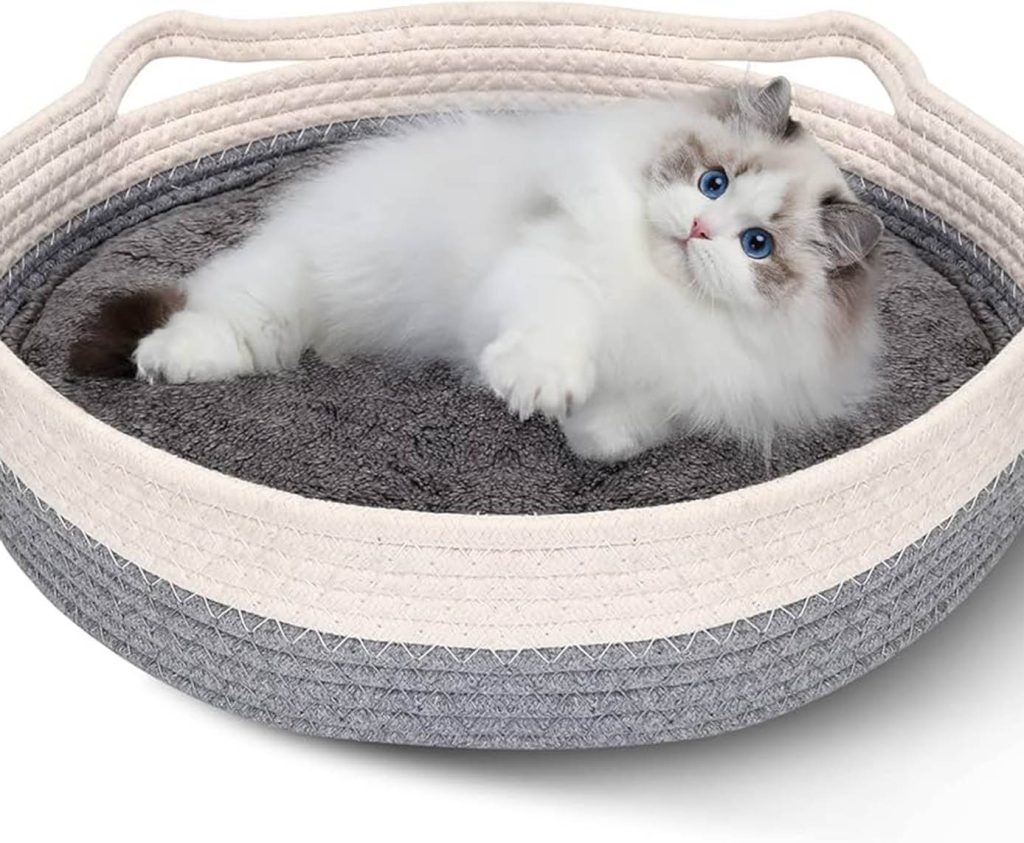
Benefits:
- Breathability: Cotton is highly breathable, making it a great option for cats who overheat easily.
- Natural Fiber: Being a natural material, cotton is hypoallergenic and less likely to cause skin irritation.
- Easy to Clean: Cotton is machine washable, making it easy to maintain a clean and fresh bed for your cat.
Considerations:
- Durability: Cotton may not be as durable as synthetic materials and can wear out more quickly, especially if it’s not reinforced with other fibers.
- Shape Retention: Cotton beds can lose their shape over time, particularly if they are not filled with a resilient material like foam.
Best For: Cats with sensitive skin, those who prefer a cooler sleeping environment, and cat owners who prioritize natural materials.
Polyester: Affordable and Versatile
Polyester is a synthetic material widely used in cat beds due to its affordability and versatility. It’s often used in combination with other materials to create durable and comfortable beds.
Benefits:
- Durability: Polyester is resistant to wear and tear, making it a durable option for active cats.
- Easy Maintenance: Polyester is easy to clean and dries quickly, which is a plus for busy pet owners.
- Affordability: Beds made from polyester are generally more affordable, making them accessible to a wider range of pet owners.
Considerations:
- Breathability: Polyester is less breathable than natural fibers like cotton, which can lead to overheating in warmer climates.
- Texture: Depending on the quality, polyester can be less soft than other materials, which might not be as appealing to some cats.
Best For: Budget-conscious cat owners, and cats who are not particularly fussy about texture.
Sherpa: The Plush, Luxurious Choice
Sherpa is a synthetic material that mimics the texture of sheep’s wool. It’s plush and incredibly soft, making it a luxurious choice for cat beds.
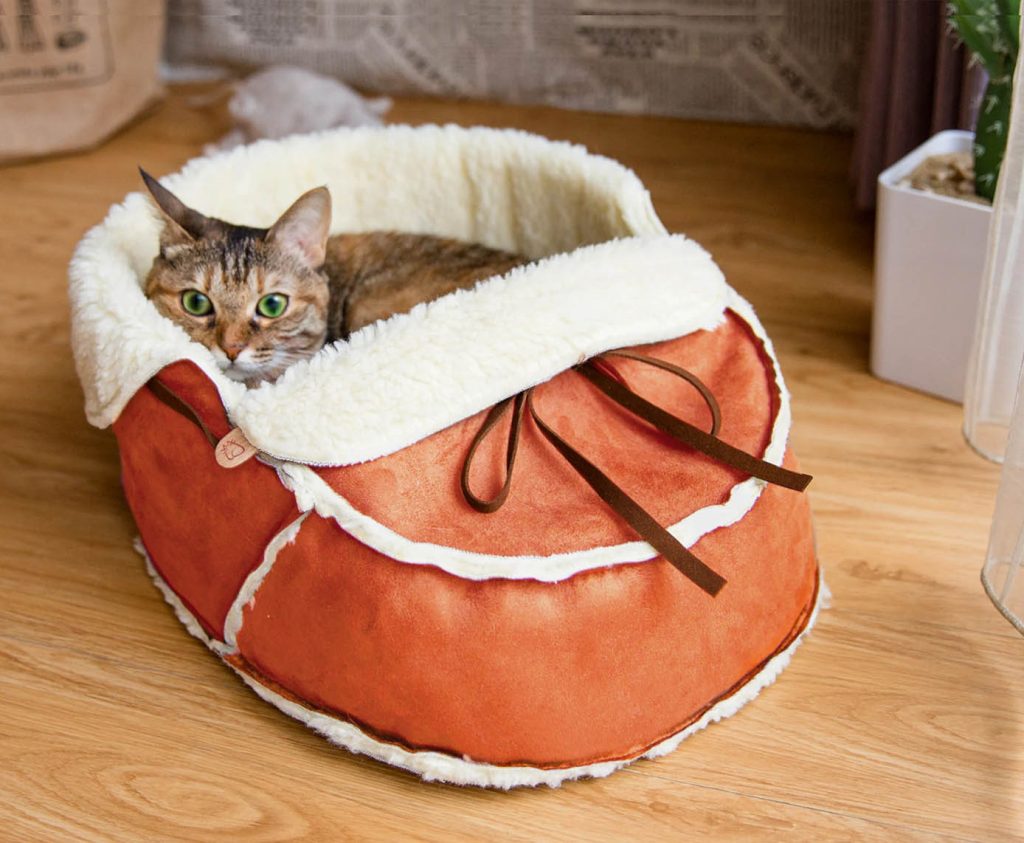
Benefits:
- Luxurious Comfort: Sherpa provides a plush, soft sleeping surface that many cats find comforting.
- Warmth: Like fleece, Sherpa is warm and cozy, perfect for cats who enjoy a snug, insulated bed.
- Appealing Texture: The texture of Sherpa is similar to fur, which can be very appealing to cats.
Considerations:
- Maintenance: Sherpa can be challenging to clean, as it tends to trap hair and can become matted over time.
- Durability: While soft and comfortable, Sherpa is not the most durable material and may wear out more quickly with frequent use.
Best For: Cats who love soft, warm beds and those who live in cooler climates.
Faux Fur: The Ultimate in Cat Luxury
Faux fur is a synthetic material designed to replicate the feel of real animal fur. It’s often used in luxury cat beds for its softness and aesthetic appeal.
Benefits:
- Realistic Texture: Faux fur offers a realistic fur-like texture that can make cats feel safe and comfortable.
- Aesthetic Appeal: Faux fur beds often look stylish and can complement the decor of your home.
- Warmth: Like Sherpa and fleece, faux fur is warm and insulating.
Considerations:
- Maintenance: Faux fur can be difficult to clean and may require more care than other materials to keep it looking fresh.
- Durability: Depending on the quality, faux fur can either be very durable or prone to shedding and wear.
Best For: Cats who love the feel of fur and cat owners who want a bed that looks as good as it feels.
Microfiber: A Soft and Easy-to-Clean Option
Microfiber is a type of synthetic fabric known for its softness and durability. It’s commonly used in furniture and bedding, including cat beds.
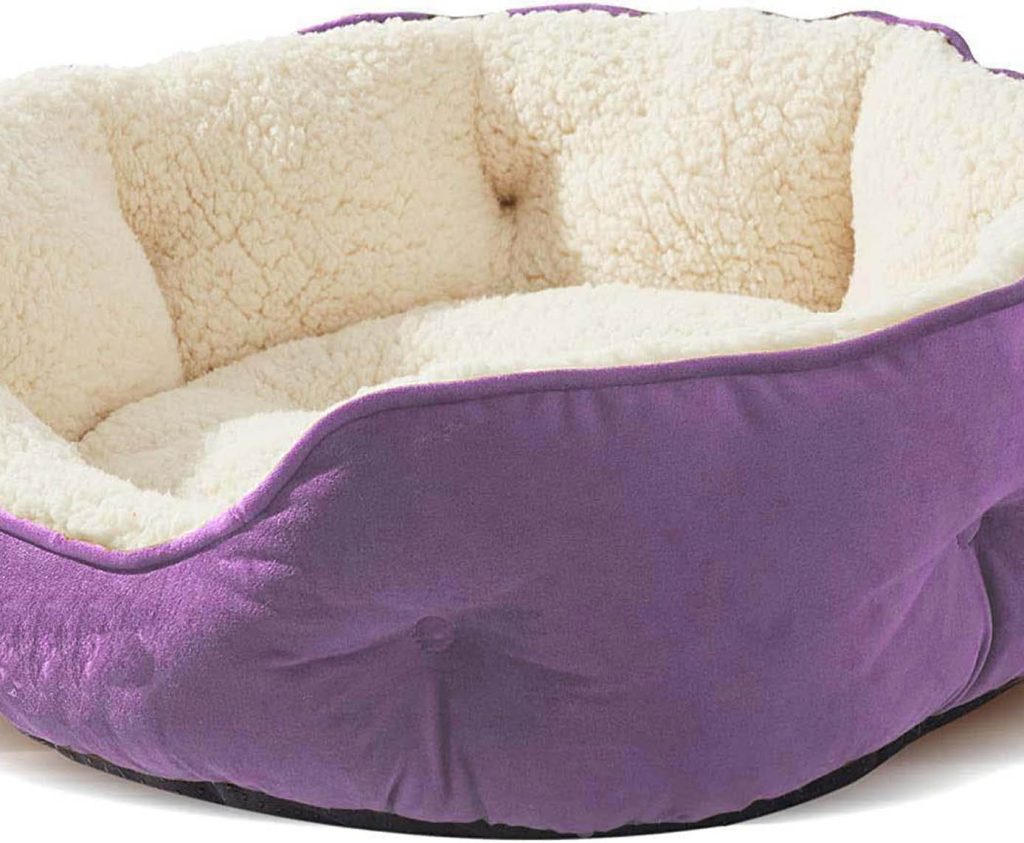
Benefits:
- Softness: Microfiber is incredibly soft to the touch, making it comfortable for cats to sleep on.
- Durability: Microfiber is resistant to scratches and wear, making it a good choice for active cats.
- Easy to Clean: The fabric is stain-resistant and easy to clean, making it ideal for households with multiple pets.
Considerations:
- Heat Retention: Like other synthetic materials, microfiber retains heat, which can be an issue in warmer climates.
- Static Build-Up: Microfiber can generate static electricity, which might be uncomfortable for some cats.
Best For: Cats who enjoy soft beds and cat owners who prioritize easy maintenance.
Choosing the Best Material for Your Cat’s Bed
Choosing the right material for your cat’s bed depends on various factors, including your cat’s age, health, sleeping habits, and the climate in which you live. Here’s a quick recap to help you decide:
- Memory Foam: Best for older cats or those with joint issues; provides orthopedic support and comfort.
- Fleece: Ideal for cats who love warmth and softness; great for colder climates.
- Cotton: A natural, breathable option suitable for cats with sensitive skin or those in warmer climates.
- Polyester: An affordable and durable choice, though less breathable than natural fibers.
- Sherpa: Offers luxurious comfort and warmth, perfect for cats who love plush beds.
- Faux Fur: A stylish and soft option that mimics the feel of real fur; good for cats who love the sensation of fur.
- Microfiber: Soft, durable, and easy to clean; a practical choice for busy households.
When choosing a cat bed, consider your cat’s specific needs and preferences, and don’t be afraid to invest in a high-quality material that will provide lasting comfort. Your cat deserves a bed that’s as unique and special as they are.
